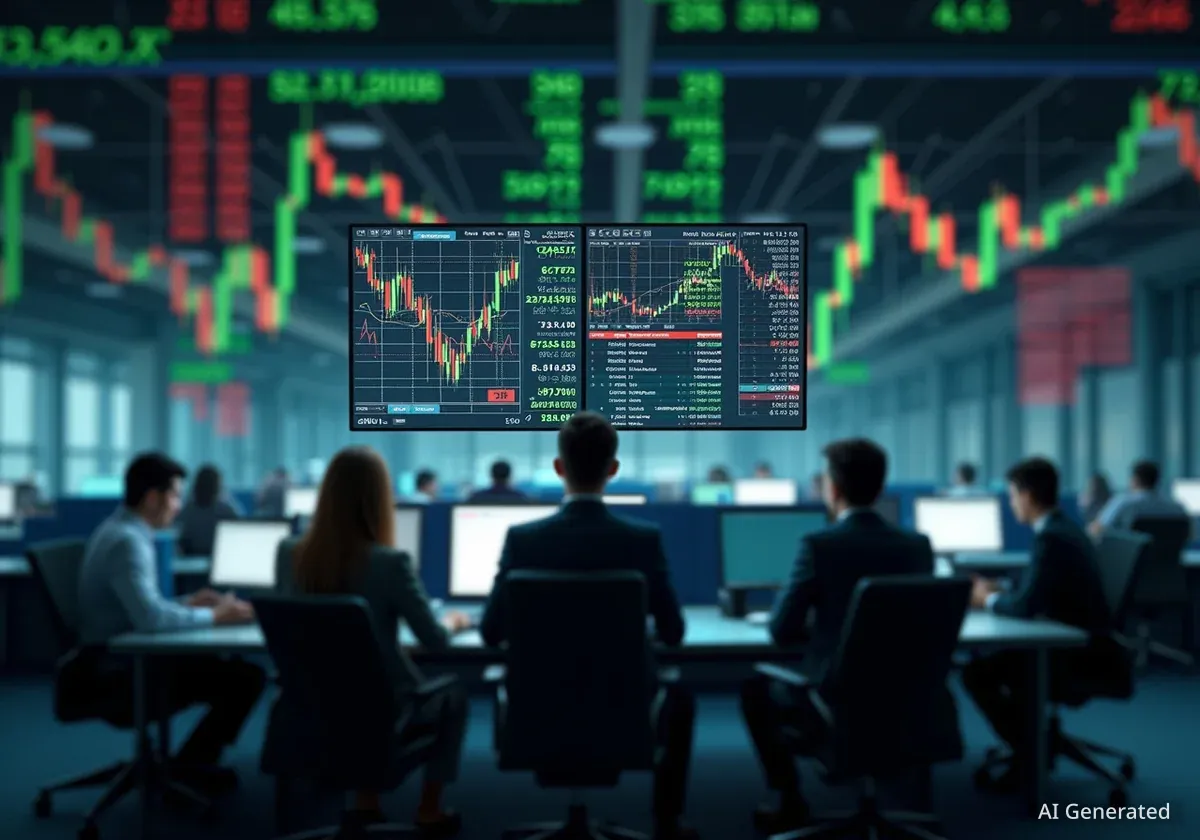Metals trading companies are on course for their most profitable year on record, driven by significant supply chain disruptions and volatile price movements. Major firms like Glencore Plc and Trafigura Group are leading the surge, capitalizing on market conditions that have created exceptional trading opportunities throughout 2025.
The boom in metals trading comes as profits in other commodity sectors, such as oil, gas, and grains, face downward pressure. This shift has attracted large energy traders to the metals market, betting on sustained demand and strategic importance.
Key Takeaways
- Major metals traders including Glencore, Trafigura, and IXM are reporting their most profitable year ever.
- Profits are driven by supply chain disruptions, price volatility, and unique arbitrage opportunities.
- Energy trading firms like Mercuria are successfully expanding into metals, while others remain more cautious.
- The strong market has created high demand for trading talent and increased acquisition interest in smaller firms.
A Landmark Year for Industry Leaders
The world's largest metals traders have capitalized on unprecedented market conditions in 2025. Glencore and Trafigura, the two dominant players in the sector, are both on track to achieve their best-ever annual results from metals trading, according to sources familiar with their performance.
IXM, the third-largest trader, has already exceeded its 2024 profits and is set for a third consecutive record year. The company's CEO, Kenny Ives, highlighted the unique environment.
“There have been some phenomenal opportunities this year,” Ives stated at a recent event. “It has been a great time to be a base metal trader in 2025. You rarely see years like 2025.”
Glencore's performance underscores this trend. The company reported record adjusted earnings before interest and tax of $1.57 billion for its metals division in the first half of 2025. Reports suggest this strong performance has continued into the second half of the year. Similarly, Trafigura's non-ferrous metals division achieved record profits for its fiscal year, which concluded in September.
Drivers Behind the Profit Surge
Several distinct factors have combined to create this highly profitable environment for metals traders. A series of supply squeezes and logistical challenges have created significant price movements and opportunities for those who move physical commodities.
The Copper Arbitrage Opportunity
A major profit driver emerged from U.S. trade policy. President Donald Trump's threat to impose import tariffs on refined copper, which was later withdrawn, created a significant price difference between the U.S. and global markets. This allowed traders to lock in substantial, low-risk profits by shipping copper to the United States, where prices reached an unprecedented premium over international benchmarks.
Beyond specific trade policies, broader market dynamics have also been favorable. Prices for mined ore, also known as concentrates, have increased for key metals like copper, lead, and zinc. This is due to an expansion in global smelting capacity that has outpaced the supply of new raw materials, benefiting traders with long-term supply contracts.
Furthermore, the rally in precious metals has provided an additional revenue stream. Traders often gain exposure to gold and silver as byproducts of base metal mining. The surging prices of these metals have prompted some trading houses to establish dedicated precious metals desks to fully capitalize on the trend.
Energy Traders Pivot to Metals
The exceptional profitability in metals has not gone unnoticed. Several of the world's largest energy trading firms have been actively expanding their presence in the metals market, viewing it as a strategic growth area.
Mercuria Energy Group Ltd. has been among the most aggressive, and its strategy appears to be paying off. The company has reportedly earned around $300 million in trading profits from its metals division so far this year. This success validates the industry view that metals will benefit from rising demand linked to the energy transition and government infrastructure programs.
However, not all new entrants have seen the same level of success. Vitol Group and Gunvor Group, two other major energy traders, have adopted a more cautious approach to their expansion. According to people familiar with their operations, their profits from metals this year have been modest.
Gunvor CEO Torbjorn Tornqvist acknowledged the competitive landscape. In an interview, he confirmed the company was profitable in metals but added that its earnings were “not that big as we hear from others.”
“It’s also a highly competitive market and we haven’t been moving as fast as some of our competitors have,” Tornqvist said. “We just want to have taken a bit of a balanced approach.”
Talent and Acquisitions Heat Up
The boom in metals trading has ignited a fierce competition for experienced talent. With established players and new entrants all looking to expand, skilled traders are in high demand. New firms entering the space, such as oil company BGN Group and Aramco Trading, are actively hiring to build out their teams.
This dynamic has also increased interest in acquisitions. Smaller, specialized trading houses are finding themselves targets for larger companies looking to quickly gain market share and expertise. Brent Omland, CEO of specialist firm Ocean Partners Holdings, confirmed he has received numerous inquiries from potential buyers.
While Omland stated his partners are “in no rush to sell,” he acknowledged the strength of the current market.
“We can’t deny we’re having a very strong year,” Omland said. “If you had stomached the difficult years of 2023 and even parts of 2024 in copper, this has been a pretty excellent market for trading.” The current environment marks a significant turnaround after several years of lackluster performance in the sector.





